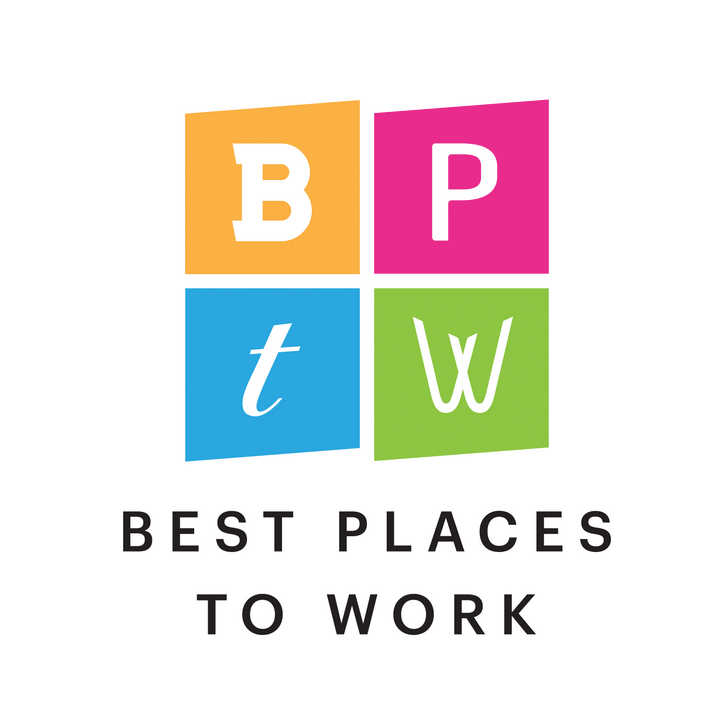
In a matter of days, the COVID-19 pandemic altered where marketing teams got their work done and how they collaborated with colleagues. Research suggests that the remote work environment is here to stay in some form, with less than one in five executives saying they want to return to the office as it was pre-pandemic. Employees are eager for hybrid office and remote options, but some executives express concern over the impacts these hybrid work environments could have on company culture.
Regardless of how, exactly, remote work shakes out, it’s clear that marketing teams must be able to collaborate remotely with confidence. This requires strategic marketing leaders that are well-equipped and experienced at helping businesses build effective remote teams and work cultures — and leading them from afar.
In this month’s virtual panel, we interviewed Authentic Fractional CMOs, Kate Simek, Katie Walter, and Ruth Glaser, plus our trusted Ally Provider, Ryan Ruud, CEO of Lake One. We asked the panelists for advice on how businesses can set their remote marketing teams up for success today — and once the world returns to “normal.”
Q1. The COVID-19 pandemic dramatically changed how and where we work. What lessons have we learned about remote collaboration in marketing, and which of these learnings are important for marketers to carry forward when the world returns to “normal?”
Kate: Forrester predicts that companies will employ an “anywhere-plus-office hybrid” model as we move into recovery and that the number of employees working remotely will eventually settle in at 300% of pre-pandemic levels at a minimum. Remote work is here to stay. Pre-pandemic marketers thrived off of the dynamics of working in the office: impromptu brainstorms, hearing the buzz of a sales bullpen, interacting with consumers, whiteboard sessions with their teams, and customer events — just to name a few!
First and foremost, I think we learned that we can collaborate remotely, but it now needs to be done with more intention. The dynamics that we once thrived off in person all have to do with listening and feedback, so I think one of the main lessons to continue and carry forward is for marketers to listen and create ways to more intentionally listen. Listen to all of the stakeholders and put that listening to work in strategies and plans.
Katie: I’ve seen marketers get a lot more creative about how they connect with people, recognizing that networking and planning sessions can all be effective and more inclusive when they’re designed with everyone virtual. “Remote” attendees are no longer disembodied voices passively listening on the phone, the whole interaction is intentional about involving every attendee. When we are together more in person, I hope we continue that mindset of treating “remote” attendees as full participants so each colleague can work from anywhere and still contribute.
Ruth: Remote work lends itself to blocks of uninterrupted work time, blocks where we can fully immerse in the work and get into a mental flow. But constant connectivity— via emails, texts, calls, Slack — can cause frequent interruptions. Aligning expectations and creating communication structures are key to working collaboratively, while allowing for deep work to get done. A good example is in the work I do in leading one of our client marketing teams. In that company’s case, instead of expecting an immediate response, we use these methods depending on the urgency/need for response:
- Microsoft Teams – Person will answer if they can be interrupted. If they don’t pick up, send a chat for response as soon as possible. Chat is used a lot.
- Project management software – Auto notifications if something is ready for review or to be worked on.
- Email – Respond by next business day.
- Zoom meetings – Standing weekly meetings, and as needed to collaborate on projects. Cameras are always on — messy offices and kids/pets/others in the background don’t matter. It’s better to connect via video than phone alone.
Deploying similar structures back in the office will continue fostering collaboration, while allowing us time for deep dives into work.
Ryan: As people became acclimated to working remotely, all the new tools to enable collaboration also came with a cost. I think one of the biggest lessons was how important it is to control your time. It’s even easier now to have an entire workday filled up because you’re not walking to a conference room for a meeting. Your attention can now be split in a thousand directions by a Slack message, a Skype or Duo call, or a browser notification for any one of the zillion new tools implemented to improve collaboration with teams, clients, and partners. Don’t get me wrong; it’s all great, and some flavor of remote work will stick around for a long time — yay! But constant interruptions and overbooked days, day after day, can take their toll. Companies will need to provide guidance and expectations to help employees manage their time.
Q2. Marketing, by nature, has long been set up well for remote collaboration. As a Fractional CMO or service provider who has worked remotely with many clients and teams, what tips, tools, or strategies do you recommend for effective remote collaboration in marketing?
Katie: Our most important job as leaders is to be clear with our teams about goals and expectations and then give them lots of space to deliver in their own way. Sometimes that means managing expectations with our own bosses, and often it means helping our team negotiate the trade-offs of what has to happen first and what can wait. Being really transparent about this is especially important when you’re not in the office together because people feel worried that if their boss can’t see them working, the boss won’t believe that they are pulling their weight. Be clear about what their deliverables are, and then over-communicate your trust that they are getting it done. And if they’re not? Approach them with curiosity to understand what might be getting in their way.
Kate: Transparency about goals, priorities, and expectations is critical. This requires communication that is frequent, clear, and invites all to participate. This communication needs to happen within marketing teams, with agency partners, and with the entire organization. Setting up intentional times to share the organization’s goals, including in all-hands meetings, is especially important to keep teams aligned. I have also witnessed organizations doing more input sessions to invite employee feedback and to collaborate and contribute to the direction of the organization.
Ruth: Piggybacking on comments above, I agree with the importance of goals, priorities, and expectations. I’ve found that a remote team can really plow through projects — just as effectively as teams working in person — if everyone is clear on the priorities and understand the requirements. Often the larger challenge is in communicating up to provide leadership with an understanding of resource requirements, timelines, and progress, so they don’t feel disconnected and become frustrated.
It’s not uncommon for management to set a goal without recognizing the amount of effort that will be required to get there. They envision an outcome: the tip of the iceberg, or 10% of the work effort. They don’t know that there is another 90% of the iceberg underwater, unseen. When collaborating with remote teams, while communicating up to management, it’s critical to help everyone see the whole iceberg, and understand how work efforts build toward achieving the desired outcome.
Ryan: I completely agree with the setting of goals. I’ll add that it’s been really helpful, especially in collaborating with teams who weren’t traditionally remote, not to take ourselves too seriously. When the COVID-19 pandemic hit, I told our team, cameras on during meetings and no excuses about life. The goal was twofold: 1) To be face-to-face with our clients as we would have been in normal times, and 2) Not to be so worried about the inevitable reality coming our way—things like kids popping into the field of view, needing help setting up Zoom, and spouses crammed in shared workspaces talking too loudly on the phone. And you know what? If you just need to wear a hoodie today — that’s fine. The result was that everyone (our team and partners) relaxed a bit more. Collaboration is a lot easier when everyone has a little more grace.
Q3. Maintaining a strong team and company culture can be challenging when working remotely. What advice do you have for businesses trying to build a strong workplace culture where employees feel supported, engaged, and valued?
Ruth: In an office, team building occurs more organically — chatting over a coffee refill or stopping in an office doorway for a quick chat. We have to work a lot harder to connect when we’re not sharing the same space.
As a Fractional CMO, I start our team’s weekly meetings with personal and business bests from last week. These “bests” aren’t major. Instead, they allow us to recognize the small wins along the way and connect on a more personal level.
Recognition is especially important in a remote environment. I send “public praise” emails to the management team about a team member’s contributions on a project, whether they reached a goal or demonstrated a particular company value.
As leaders, we’re often in “coach” mode. But it’s important to be intentional about validating all those things people do right each day. This past Halloween, I sent my team members a bag of their favorite candy with a note of appreciation for their work. It was such a small gesture, but they loved it!
Katie: Our ideal culture has to be integrated with how we handle goal setting and performance management. Start with clarity about the most important business priorities. Then let your team see you saying no or negotiating deadlines when new priorities creep in. Then, say thank you — A LOT — for all kinds of big and small things and be specific about the impact of the person’s actions and effort. If you start with that foundation of clarity and sincere gratitude, the splashier gifts and acts of thanks and support will be even more meaningful.
Kate: Leadership, not location, is the key to a strong company culture. Now more than ever, company values that are understood, communicated, modeled by leaders, and lived by all members of your organization are critical. Employees must see and hear how values will ensure the organization will achieve that success. Organizational values and strong leadership also contribute to success by providing a framework for how your leaders show up in challenging situations — within or outside the organization’s walls. It is important to create space for teams to show that you and your organization care about people at work and at home. Checking in with team members, providing support, and allowing for ongoing conversations builds trust in leaders and strengthens your culture.
Ryan: I don’t think that there is much more to add beyond “Leadership, not location, is the key to a strong company culture.” Well said, Kate.

Is your team lacking a strategic marketing leader experienced at building remote teams? Our Authentic Fractional CMOs knows what it takes to build a strong team and culture — whether they’re working onsite at an office or remotely. Let’s connect to discuss how one of our strategic leaders can help your marketing team thrive in a remote or hybrid work environment.








